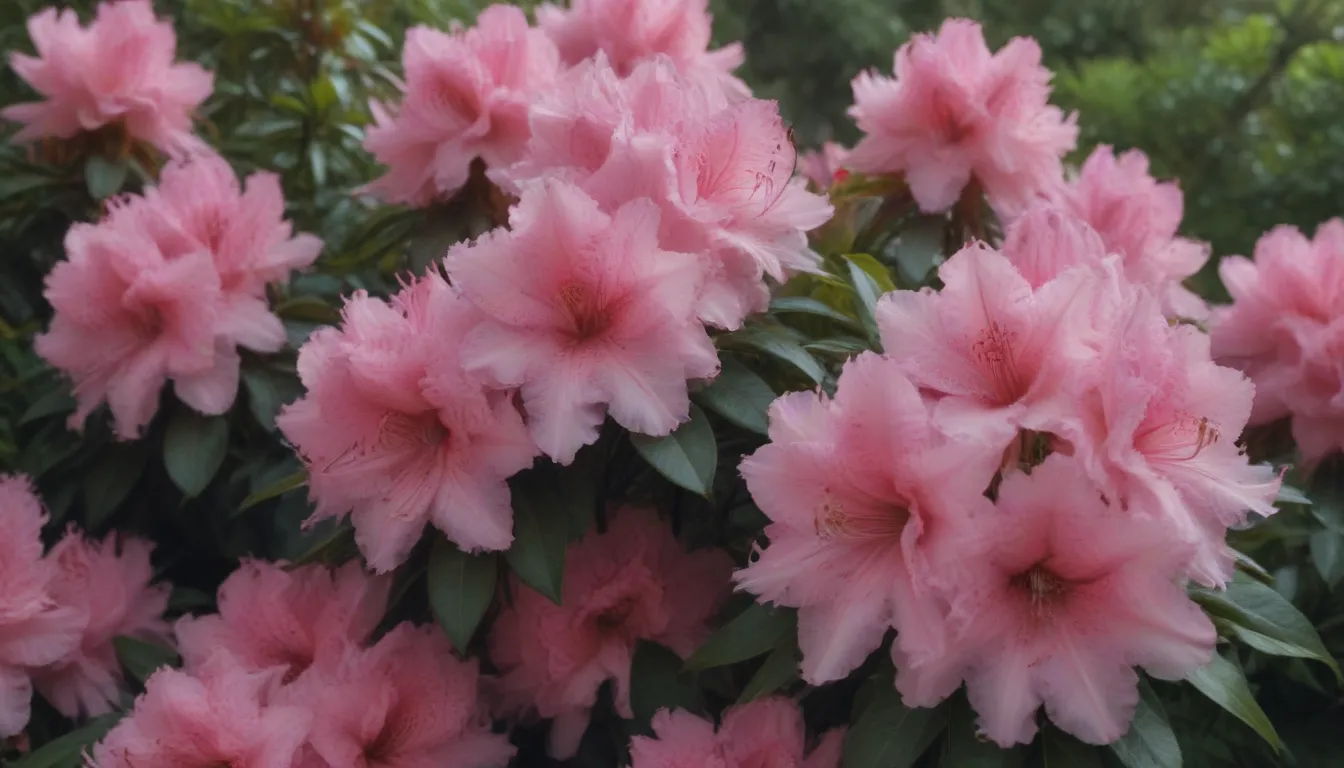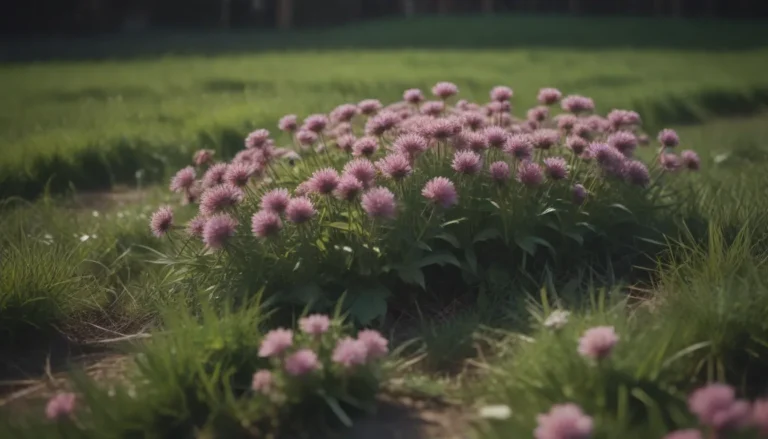Ultimate Guide to Growing and Caring for Rhododendron English Roseum

Are you looking to add a show stopping plant to your garden? Look no further than the Rhododendron English Roseum! With its large clusters of rosy, pink-purple flowers, this hybrid evergreen shrub is a beautiful addition to any landscape. But in order to keep this plant thriving, it’s important to understand how to properly care for it. In this in-depth guide, we will explore everything you need to know about growing and maintaining Rhododendron English Roseum.
Rhododendron English Roseum Care
Taking care of your Rhododendron English Roseum is essential to ensuring it thrives in your garden. Here are the main care requirements to keep in mind:
Light
- Rhododendron English Roseum thrives in semi-shade and does not do well in harsh, full sun.
- Plant in an area with dappled sun or partial shade to provide the ideal lighting conditions.
Soil
- The soil should be loose, organically rich, and well-draining.
- Test the soil to ensure it is acidic (pH < 6.0) or add supplements to increase acidity.
- Maintaining the right soil conditions will help the plant produce bountiful blooms.
Water
- Rhododendrons prefer moist soil but can tolerate some dry periods.
- Mulch around the plant to retain moisture, but be careful not to overwater.
Temperature and Humidity
- Rhododendron English Roseum prefers cooler climates with lower humidity.
- It is best suited for USDA Hardiness Zones 4a-7b.
Fertilizer
- Fertilize yearly in the spring after the blooming period with an acid-based fertilizer.
- Working compost into the soil can provide the pH balance needed for optimal growth.
Types of Rhododendron English Roseum
Rhododendron English Roseum is a hybrid of Rhododendron catawbiense or the Catawba Rhododendron. Here are some similar cultivars to consider:
- Roseum Elegans (Rhododendron catawbiense x ‘Roseum Elegans’)
- Boursault (Rhododendron catawbiense x ‘Boursault’)
- Purpureum Elegans (Rhododendron catawbiense x ‘Purpureum Elegans’)
Pruning Tips
Pruning your Rhododendron English Roseum is important for maintaining its structure and promoting healthy growth. Here are some tips to keep in mind:
- The best time to prune is right after the plant has finished blooming and new growth begins.
- Pruning young plants is especially important to increase branching and flower production.
- As the plant ages, cut back overly vigorous branches to maintain the desired size and shape.
- Pruning can encourage new shoots along the main stems, adding foliage where needed.
Propagating Rhododendron English Roseum
If you’re looking to propagate your Rhododendron English Roseum, you can do so using cuttings or layering. Here’s how:
Layering
- What You’ll Need:
- Sharp knife or scissors
- Garden spade
- Rooting hormone
- Potting mix
- Pot
- Where to Cut:
- Choose a healthy, non-flowering branch to cut and layer.
- How to Propagate:
- Make a small cut in the branch, apply rooting hormone, bury the branch in soil, and wait for roots to develop.
Cuttings
- What You’ll Need:
- Sharp knife or pruners
- Rooting hormone
- Potting mix
- Pot
- Where to Cut:
- Take cuttings from soft, new growth in early fall.
- Maintaining the Cutting:
- Keep the cutting moist and in a warm, sunny location.
- When to Plant the Cutting:
- Plant the cutting in a pot once roots have developed.
How to Grow Rhododendron English Roseum From Seed
Growing Rhododendron English Roseum from seed requires patience, but it can be done. Here are some tips to get you started:
- Start the seeds indoors in late January or February for best results.
Overwintering Tips
To ensure your Rhododendron English Roseum survives the winter months, consider the following:
- If heavy snow or ice is predicted, wrap the shrub in burlap for protection.
- Remove the burlap once the weather warms up to avoid suffocating the plant.
Common Pests and Plant Diseases
Keep an eye out for these common pests and diseases that can affect Rhododendron English Roseum:
- Rhododendron borer and stem borer: Can cause wilting of leaves and twig dieback.
- Black vine weevils and Rhododendron gall midge: Feed on the leaves and can defoliate the shrub.
- Botryosphaeria canker: A fungal disease that causes scattered dying branches.
- Fungal leaf spot pathogens: Cosmetic issues that do not typically cause serious harm.
How to Get Rhododendron English Roseum to Bloom
To encourage blooming in your Rhododendron English Roseum, follow these tips:
- Protect the plant from full sun and keep the soil cool and moist.
- Avoid overfertilizing mature plants to prevent excessive leaf growth.
- Deadhead spent blooms to promote new bud production.
- Protect the shrub from extremely cold weather and heavy snow or ice storms.
Bloom Months
Most Rhododendron English Roseum plants bloom in late spring or early summer, depending on your hardiness growing zone.
How Long Does Rhododendron English Roseum Bloom?
The shrub can bloom for two to five weeks, depending on weather conditions.
What Do Rhododendron English Roseum Flowers Look and Smell Like?
The flower heads are held in dome-shaped trusses of 8-10 flowers. The rosy, lilac pink blooms are funnel- or bell-shaped with 10 stamens. While some rhododendrons are fragrant, the English Roseum hybrid is not highly perfumed.
Common Problems with Rhododendron English Roseum
Even with proper care, there are a few common issues to watch out for:
Leaves Turning Yellow
Yellow leaves may indicate alkaline soil. To correct this, amend the soil with compost or acid-based fertilizers to make it more acidic.
Wilting Leaves
Overwatering or drought can cause wilting or drooping leaves. Be sure to keep the soil moist and provide adequate mulching.
In conclusion, Rhododendron English Roseum is a stunning plant that can thrive in the right conditions. By following these care tips and guidelines, you can enjoy beautiful blooms and healthy growth in your garden for years to come. So go ahead, plant a Rhododendron English Roseum and watch your garden shine!





